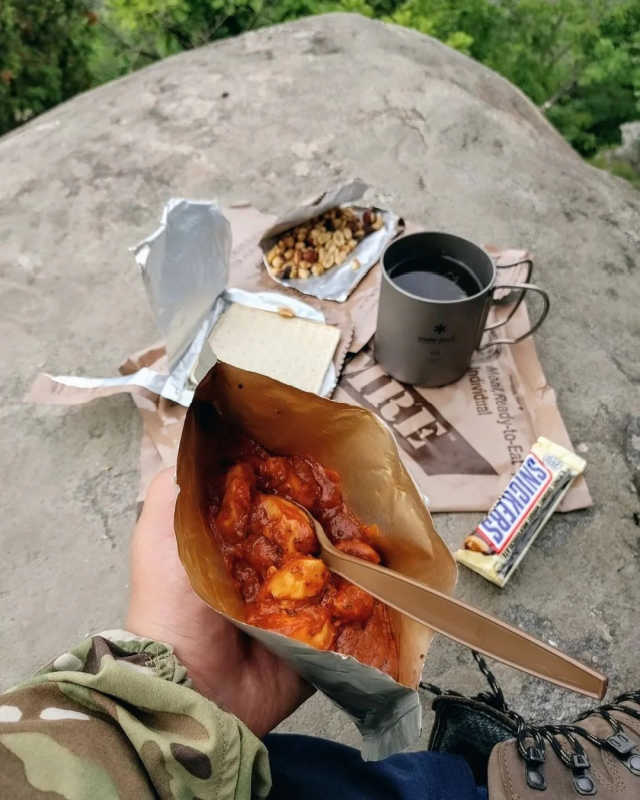
Freeze Dried Food vs MRE: Which One Is Best for Survival?
Before we dive into the ultimate question — freeze dried food vs MRE — let’s take a quick look at how each came to be. Understanding the history and evolution of MREs and freeze-dried foods helps us appreciate their modern forms and make better decisions for survival, camping, and emergency preparedness.

A Brief History of MREs (Meals Ready-to-Eat)
Meals Ready-to-Eat, or MREs, have military origins. Designed to deliver compact, high-calorie meals in the harshest conditions, they’ve become staples not just in the armed forces but also in the civilian world of prepping and bushcraft.

➤ World War II Beginnings
During WWII, rations consisted mainly of canned and dehydrated goods. They were heavy, hard to carry, and not always tasty or convenient.
➤ K-Rations and C-Rations
To solve portability issues, the U.S. introduced K-Rations in 1941 — single-day food kits with canned and dried items. These later evolved into C-Rations, used through the Korean and early Vietnam Wars, offering more variety but still dependent on cans.
➤ LRRP Rations
In Vietnam, Long Range Patrol (LRRP) rations came into play. They were lightweight, freeze-dried meals intended for special forces on multi-day missions — a precursor to today’s debate of freeze dried food vs MRE.
➤ Birth of the MRE
By the late 1970s, the Department of Defense introduced the MRE — a fully-cooked, shelf-stable meal in a pouch. The first generation rolled out in the early 1980s and has since evolved with better flavor, variety, and nutrition.
➤ What’s Inside an MRE?
A modern MRE usually includes:
-
Entrée
-
Side dish
-
Snack or dessert
-
Drink mix
-
Flameless ration heater (FRH)
-
Spoon, condiments, napkin, and gum
MREs are designed to meet military-grade nutritional needs and withstand rough handling, extreme temperatures, and long storage.
The History of Freeze-Dried Food
While MREs were born from military logistics, freeze-dried food owes its rise to science and space exploration.

➤ Early 1900s Experiments
The freeze-drying process began in the early 20th century, mainly for medical and lab use. Foods were tested too, but it wasn’t yet a mainstream idea.
➤ World War II Innovation
During WWII, freeze-drying preserved blood plasma and medical supplies. These wartime breakthroughs paved the way for its use in food preservation.
➤ Commercial Use Takes Off
In the 1950s and 60s, freeze-dried foods like instant coffee and fruit hit the market. Companies quickly saw the potential for lightweight, long-lasting meals.
➤ NASA’s Contribution
The 1960s space race made freeze-dried food famous. NASA needed food that was lightweight, nutritious, and stable — a match made in heaven.
➤ 70s–80s: The Outdoor Boom
Outdoor enthusiasts began adopting freeze-dried meals. Backpackers, climbers, and preppers loved the weight savings and easy prep.
➤ Modern Freeze-Drying
Today’s technology retains more flavor, nutrition, and texture, making freeze-dried food a top choice for survivalists and anyone building a long-term food storage plan.
MRE's vs Freeze-Dried Food:
Now that we have squared away some of the history of both, Lets begin our topic of MREs (Meals Ready-to-Eat) vs. Freeze-Dried foods.
MRE's and Freeze-Dried foods are both types of pre-packaged, ready-to-eat meals designed for convenience, portability, and extended shelf life.
However, they have distinct differences in terms of preparation, taste, nutritional content, and use cases.
Freeze Dried Food vs MRE: The Real Comparison
Now that we understand their roots, let’s get into the nitty-gritty: freeze dried food vs MRE. Which one should you pack in your bug-out bag or camping kit?
| Feature | MRE (Meal Ready-to-Eat) | Freeze-Dried Food |
|---|---|---|
| Preparation | Ready to eat out of the package. Flameless heater included for hot meals. | Requires hot water and a few minutes to rehydrate. |
| Taste & Texture | Fully cooked and seasoned, but sometimes dense or mushy. | Closer to fresh food when rehydrated. Better texture retention. |
| Nutrition | High-calorie and balanced for strenuous use. | Nutrient retention is good but may lose some vitamins during processing. |
| Weight | Heavier due to moisture content and included accessories. | Extremely lightweight — ideal for hiking or bug-outs. |
| Shelf Life | ~5 years average (depending on storage). | Often exceeds 20–25 years when stored properly. |
| Packaging | Thick, puncture-resistant pouches. | Vacuum-sealed, moisture-free bags. |
| Use Case | Military, emergency kits, grab-and-go meals. | Long-term food storage, backpacking, space saving. |

When to Choose MREs
Choose MREs when:
-
You need a ready-to-eat meal with no prep or water access.
-
You're planning for short-term emergencies or bug-out situations.
-
You prefer a full meal kit with snacks, drink mix, and utensils included.
MREs shine in scenarios where convenience and calories are king.

When to Choose Freeze-Dried Foods
Choose freeze-dried foods when:
-
You're backpacking or hiking and need to minimize weight.
-
You're building a long-term food storage solution.
-
You have access to water and want more flavorful meals.
Freeze-dried food is the go-to for off-grid living, prepping, and lightweight travel.
Final Thoughts: Which One Wins?
So who wins the battle of freeze dried food vs MRE?
There’s no one-size-fits-all answer. Each has its place in survival, emergency prep, and adventure.
-
MREs are ideal for quick, ready-to-eat situations where convenience and calories matter more than weight.
-
Freeze-dried meals are better for long-term storage and weight-conscious travel, offering more flexibility and shelf life.
At the end of the day, you don’t have to choose just one. The best kits use a combination of both, giving you maximum versatility no matter what the situation throws at you.
Looking to Stock Up?
At Better Bushcraft, we offer a curated selection of MREs, freeze-dried meals, and other long-term food storage solutions to keep you ready for anything.
👉 Shop our survival food collection and be prepared the smart way.

